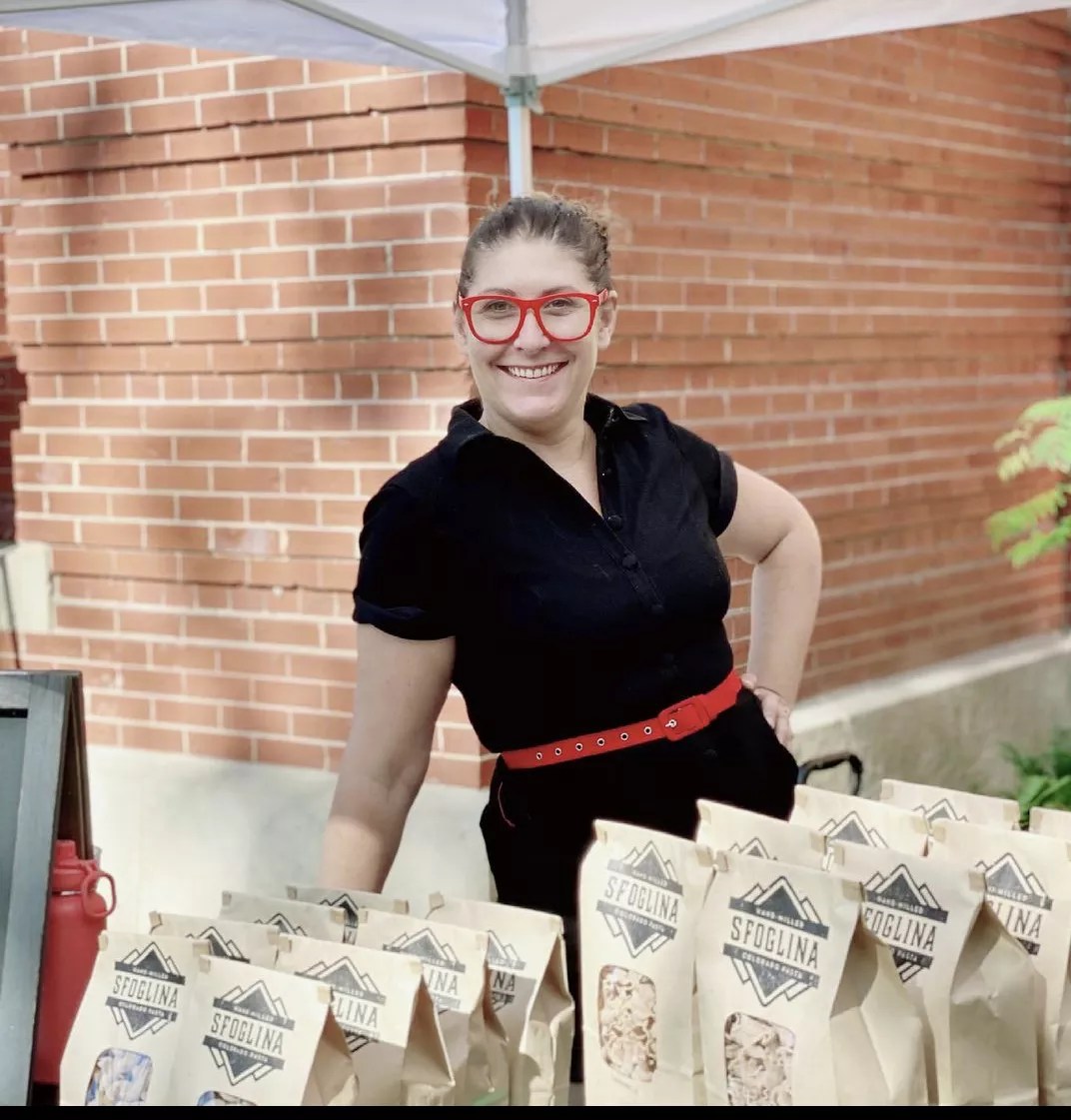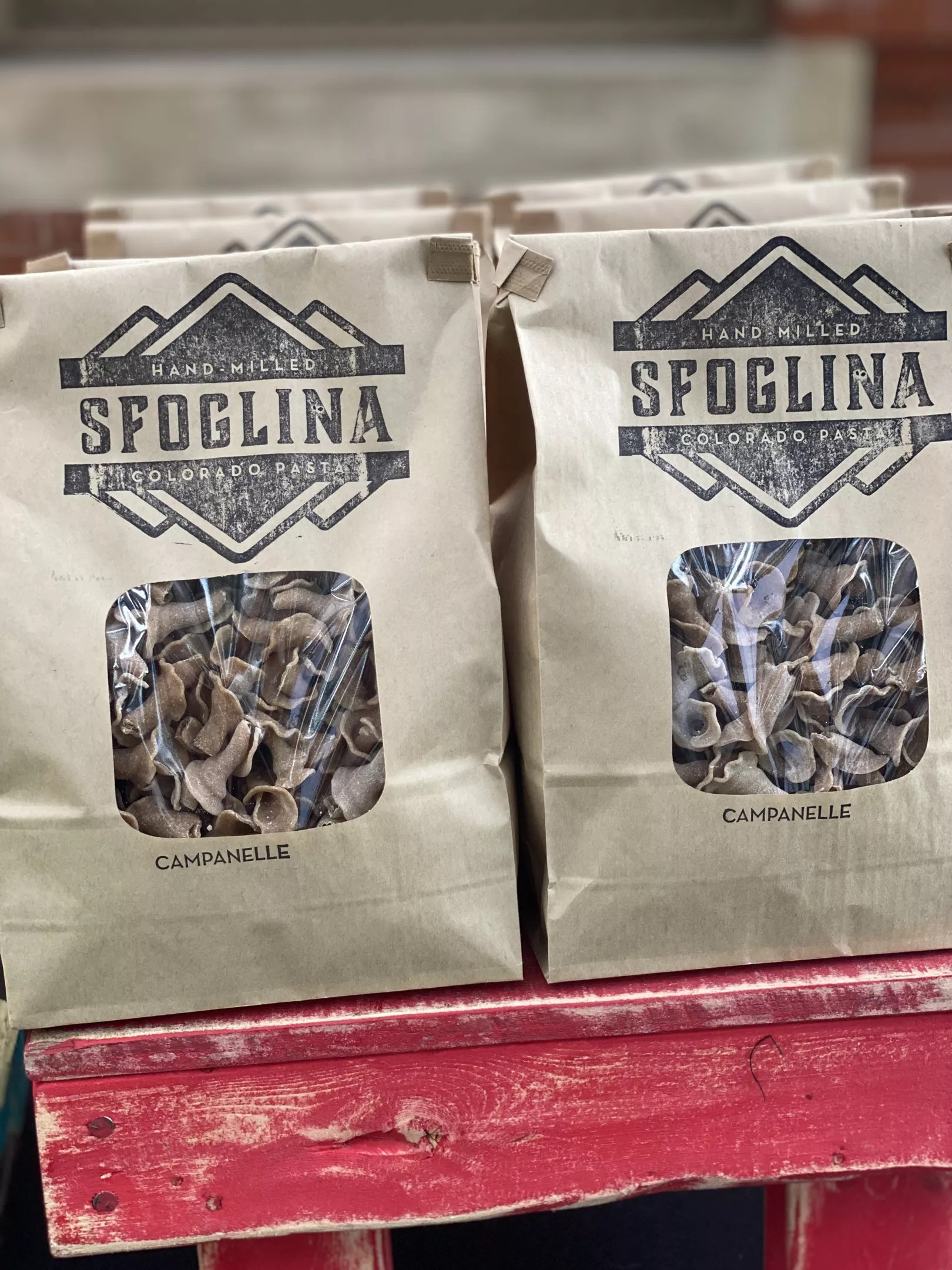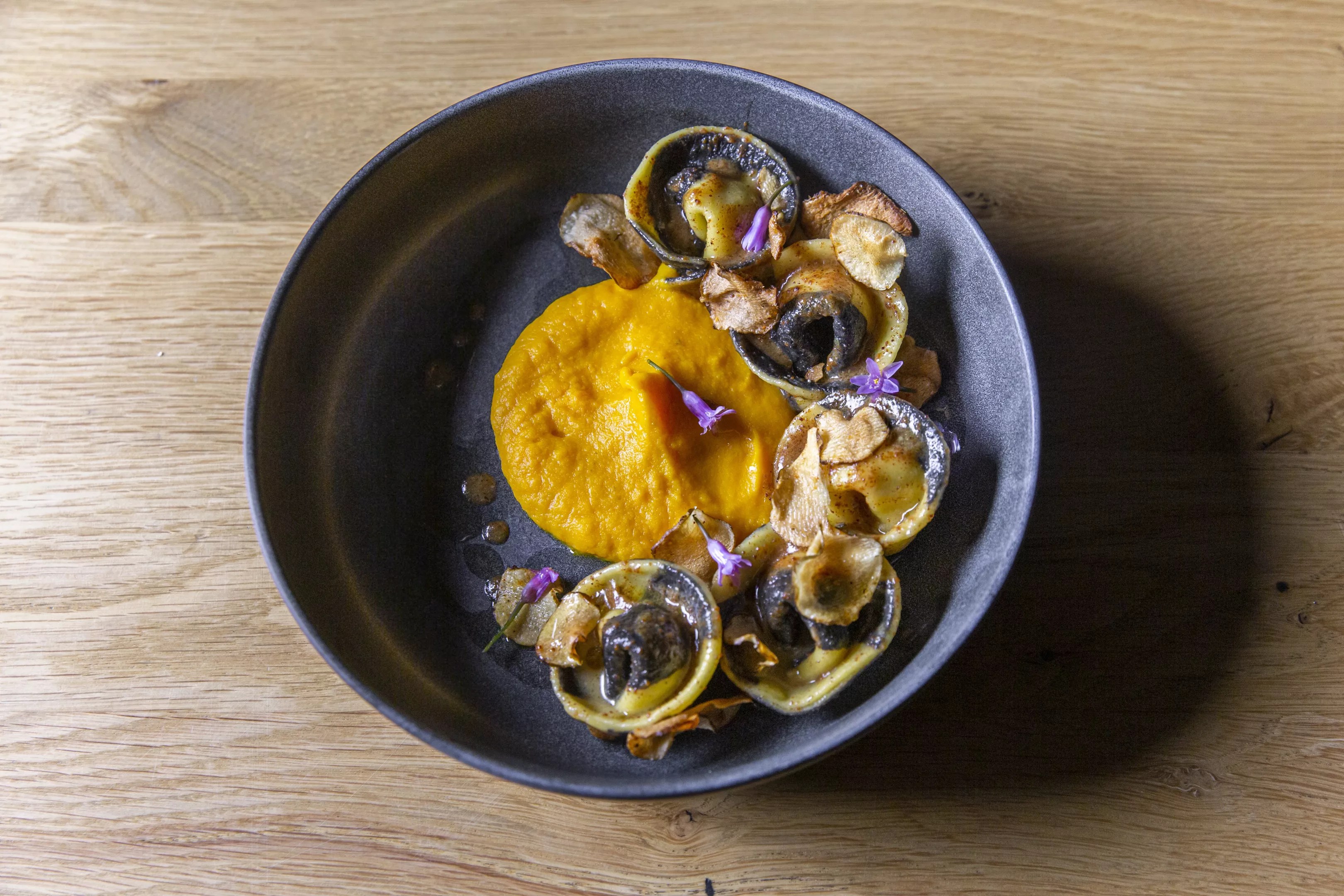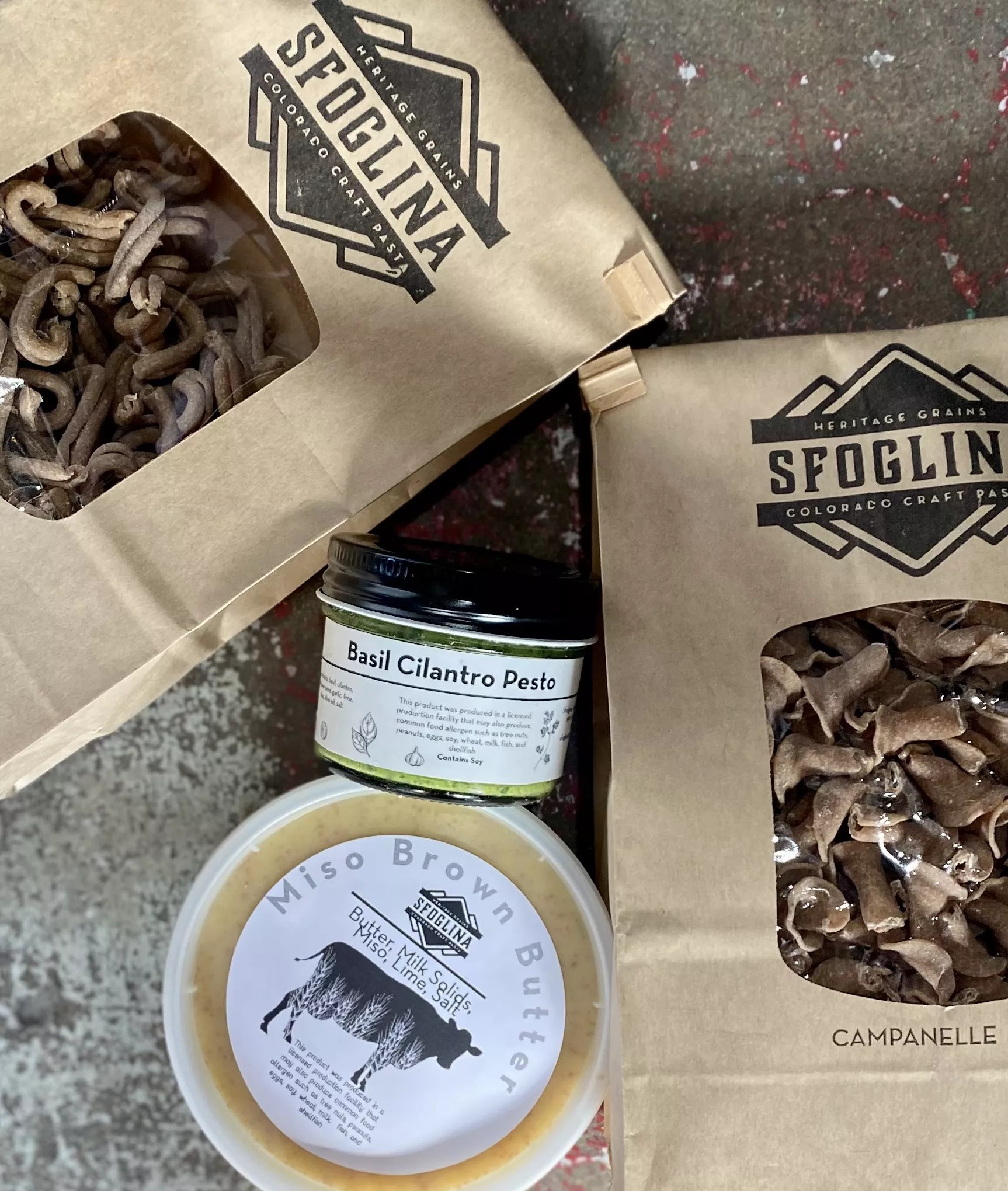
Jesse Albertini

Audio By Carbonatix
In Local Finds, recipe developer and freelance writer Ashlee Redger highlights standout local food brands and dishes up recipes using their goods.
Brand: Sfoglina Handmade Pasta
Where to find it: Sfoglina’s heritage-grain products are available online for local pickup and shipping. You can spot the pasta at farmers’ markets throughout the year, including the Fort Collins Winter Market this February and the City Park Farmers Market, which starts May 13. It is regularly available at Salt + Blue in RiNo as well as Scratch Family Bakery in Five Points. Sfoglina also makes pasta for Spade & Spoon, a meal kit company that uses locally sourced ingredients.
About the business: Jesse Albertini came to Colorado to go skiing in the winter of 2004. She had just graduated from the University of Albany and planned to stay for the winter. What started out as a season turned into years, then nearly two decades. Since moving to Colorado, Albertini has created and honed her career as a chef and, more recently, the quality-obsessed founder of Sfoglina’s whole-grain pasta.
After several years in the hospitality industry in Winter Park, Albertini moved to Denver to add a culinary arts spin to her business degree, attending the now-closed Johnson & Wales University. After culinary school, she worked as an executive chef as well as a creative development chef for a catering company. In 2017, she was a sous chef at the brand-new Citizen Rail, and the next year, she helped open Jovanina’s Broken Italian in LoDo. While producing the pasta at Jovanina’s, she began working on a business plan with her husband.
Denver, make your New Year’s Resolution Count!
We’re $15,500 away from our End-of-Year campaign goal, with just a few days left! We’re ready to deliver — but we need the resources to do it right. If Westword matters to you, please contribute today to help us expand our current events coverage when it’s needed most.

Sfoglina’s dried pastas are made with heirloom grains and extruded using a bronze die.
Jesse Albertini
“Finally, I started to feel like I had enough experience to branch out on my own,” Albertini remembers. She had always wanted to have her own business, but wanted to build up the real-world expertise to do it right. Her dream started to take the shape of a brick-and-mortar specialty shop. There, she and her husband could sell “pasta, sauces and all the things I love making,” she says. It would have a chef’s counter and a catering department, to boot.
As the couple was figuring out financing for their upcoming venture, they found out that Albertini was pregnant. “We were like, let’s not take out a huge loan right at this moment,” she recalls. About a month after baby Adeline was born, the COVID-19 pandemic shut everything down. “At first there was a little bit of depression, like what do I do? We looked at the business plan and boiled it down to the essence of what my plan was. It was really about focusing on local grains, local farmers, and trying to highlight that in pasta.”

Sfoglina frequently offers limited-run pasta shapes and flavors, like this fresh-frozen spinach fettuccini.
Sfoglina/Instagram
Albertini launched Sfoglina in the summer of 2020. The name refers to a woman who makes and rolls out sheets of fresh pasta dough. All of Sfoglina’s doughs are made with heritage whole grains that have been freshly ground using a stone mill.
In the beginning, Albertini had a tough time sourcing the ingredients she wanted to use. “I went to all the usual outlets,” she says. “No one had information on fresh flour. It was so frustrating, because I just knew it tasted better.”
From her time at Jovanina’s, she had a connection with a Colorado-based family farm called Grains From the Plains that would hand-deliver buckets of heirloom wheat to her porch. Now Albertini works closely with Moxie Bread Co. as well as the Colorado Grain Chain (a collection of farmers, millers, bakers and chefs who are devoted to promoting sustainable, local grains in our state). Heritage grains are grown with flavor, nutrition and sustainability in mind, as opposed to the cheap and high-yielding common wheat that makes up the overwhelming majority of wheat crops around the world. Heritage and heirloom grains tend to be higher in protein and can be easier to digest for those with gluten sensitivities.
In addition to high-quality local grains, Albertini takes a few other steps to ensure that her pasta is anything but ordinary. She uses a bronze die to extrude the dough, which produces a shaped pasta with a slightly roughed-up surface texture that holds onto sauce better. While most modern pastas are dried quickly at high temperatures, Albertini dries hers slowly over the course of 24 to 36 hours. For her frozen stuffed pasta, she likes to source as much as she can from the farmers’ market in the summer. Last year, Albertini created a celery root ricotta tortellini that was spiked with chili paste from her fellow market vendor MisoHeat.

Albertini tries to get as much as she can from local farms, including the vegetables that go into her frozen stuffed pastas.
StarChefs
For devoted pasta lovers (who isn’t one?), Sfoglina has a Rotating Pasta of the Month Club where Albertini highlights new heirloom grains and shapes. Every month, she sends along an accompanying recipe and an informational newsletter. “It’s a really nice way to test out different grains, feature the flavors and learn about the farmers that they come from,” she explains.
Albertini, whose daughter just turned three, started Sfoglina as a cottage-foods business, but now has a commercial kitchen where she produces wholesale orders, frozen pasta varieties and food for private chef events. She plans to move all of her production into the commissary by this spring. Currently, she sells primarily at local markets around the Denver area, but each year she works to layer another aspect of her original plan back into her business.
She’s building in other business practices, too, like donating 1 percent of Sfolgina’s profits to charity. This year’s donation will go to Frontline Farming, a Denver-based food justice and farmer advocacy group. She will also participate in the National Kidney Foundation’s Great Chefs of the West event on March 9, and hopes to accomplish her long-awaited goal of opening a brick-and-mortar shop by 2024 or 2025.

Every year, Albertini works toward her goal of opening a brick-and-mortar shop for her crafted products.
Jesse Albertini
How to use it: Carbonara. We all love it. It’s a classic Roman pasta dish in which the pasta is coated in a luscious sauce made of eggs, Parmesan and/or Pecorino and crispy bits of salty, savory guanciale or pancetta. But let’s say you replace the pork with another umami heavy hitter: anchovies. Now you have something that’s in Caesar territory – all it’s missing is some acid and garlic. This recipe combines both concepts. To prevent the silky sauce from turning scrambly, you emulsify it first, then use Daniel Gritzer‘s foolproof double-boiler method to finish it off.
Caesar-ecci (Caesar Carbonara Pasta)
For the sauce:
- 2 oil-packed anchovy fillets, drained
- 1 large egg
- 2 large egg yolks
- 1 medium clove garlic
- 1/4 cup extra-virgin olive oil
- 2 tablespoons grated Parmesan cheese
- 1 tablespoon freshly squeezed lemon juice
- 1 teaspoon Dijon mustard
- 1/4 teaspoon kosher salt
For the pasta:
- 1 (12-ounce) bag dried casarecci (or any other Sfoglina shape)
- Salt and coarsely ground black pepper, to taste
- Toasted breadcrumbs, chopped parsley, grated Parmesan and/or lemon zest, to garnish (optional)
For the sauce:
- Add all of the ingredients for the sauce to a wide jar. Use an immersion blender to purée the mixture until it is very smooth throughout, then set aside.
For the pasta:
- Fill a large pot halfway with water, salt it lightly and bring it to a boil over medium-high heat. Add pasta and cook according to the shape’s directions until just al dente. Do not drain. Instead, use tongs or a slotted spoon to scoop the pasta into a large, heatproof bowl. Try to get the excess water off of the pasta before transferring it (it’s okay if a little comes along). You can remove the pot from heat as you pull the pasta out, but return it to medium heat afterward.
- Immediately pour the Caesar sauce over top of the hot pasta, along with 1/4 cup of pasta water from the pot. Quickly toss and stir the pasta with the sauce to distribute it evenly, then place the bowl on top of the large pot to make a double boiler. The bottom of the bowl should not touch the boiling water, so drain a little water out if you need to.
- Continue stirring the pasta quickly and constantly, until the sauce thickens to a creamy consistency (this should only take a few minutes). If the sauce gets too thick for your liking, add 1/4 cup more pasta water at a time. Stir to fully incorporate each addition of pasta water until the sauce is silky and clings to each piece of pasta.
- Taste, then add salt and pepper to taste. Garnish, if desired, with toasted breadcrumbs, chopped parsley, more Parmesan and/or lemon zest. Serve immediately.

You can make Caesar-ecci by dressing Sfoglina’s casarecci pasta with a silky Caesar-inspired sauce.
Ashlee Redger
Recipe tips: The cooking water from the pasta is ideal for incorporating into the sauce, so be careful not to oversalt it at the beginning. Don’t fill the pasta pot all the way up, either, as you want the water to be concentrated with starches (an inch or two of boiling water above the level of the pasta is great). You’ll also need a large, heat-proof bowl that can sit on top of the pot without the bottom touching the water. The sauce only comes to about a cup, so an immersion blender is ideal, but you can use a small food processor or blender – just stop and scrape the bottom and sides with a rubber spatula a few times to fully incorporate all of the ingredients.